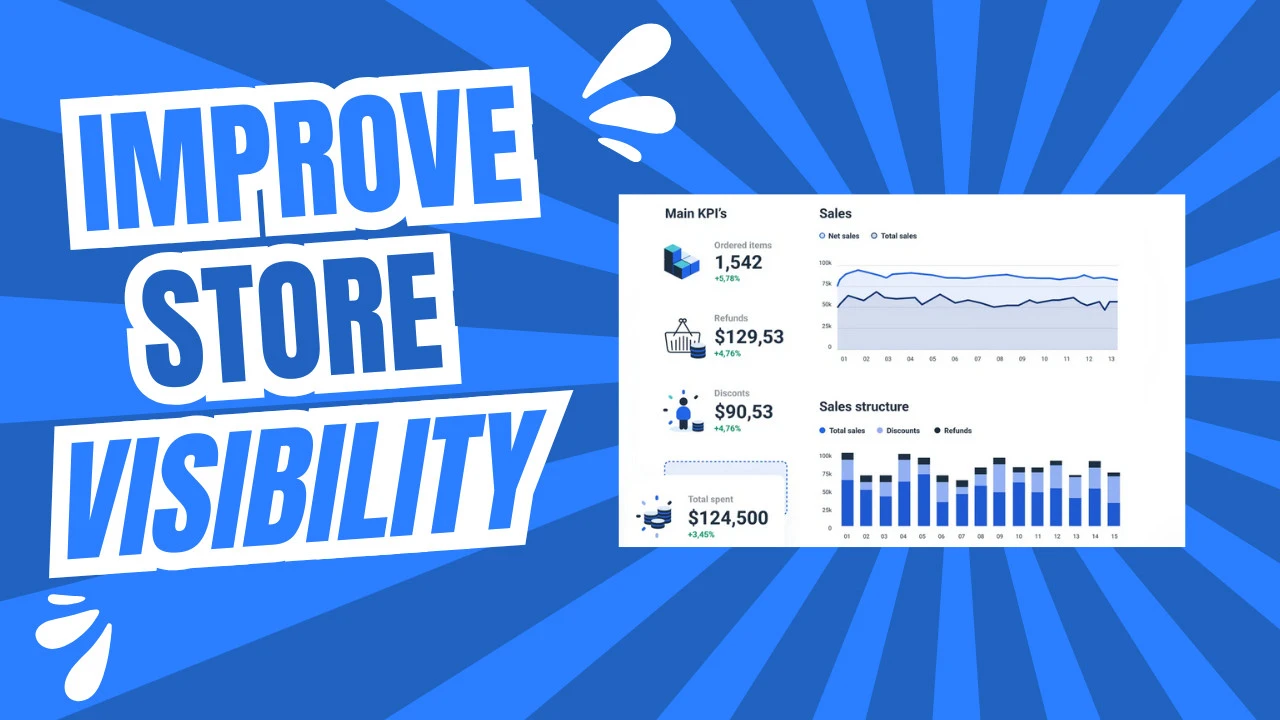Crazy Impact of Ads on User Experience for a Website: Does It Hampers Traffic ? {2024}
Ads are a common sight on many websites today. They help website owners make money. But ads can also change how users feel about a website. This article will look at how ads affect user experience. We'll explore different types of ads and their impact. We'll also discuss ways to make ads work better for both websites and users.
How do ads affect user experience on websites?
Ads can have a big impact on how people use websites. Sometimes, ads make it hard for users to find what they're looking for. They can slow down web pages or block important content. This can frustrate users and make them leave the site.
But not all ads are bad for user experience. Some ads can be helpful. They might show users products they're interested in. Or they could provide useful information. The key is to use ads in a way that doesn't annoy users.
Website owners need to think carefully about their ads. They should ask:
- Are the ads easy to ignore if users don't want them?
- Do the ads slow down the website?
- Are the ads relevant to what users care about?
By answering these questions, website owners can make better choices about ads. This can lead to a better experience for users.
What is the impact of intrusive ads on user engagement?
Intrusive ads are ads that get in the way of what users want to do. These ads can really hurt user engagement. When users see too many intrusive ads, they often:
- Leave the website quickly
- Don't come back to the site
- Don't click on links or buttons
- Don't read much content
Pop-up ads are a good example of intrusive ads. They appear suddenly and cover the content users want to see. This can be very annoying. Users might close the website instead of dealing with the ad.
Another type of intrusive ad is the autoplay video ad. These ads start playing without the user choosing to watch them. They can be loud and surprising. This can make users feel like they're not in control of their browsing experience.
Intrusive ads can also make websites seem less trustworthy. Users might think the website cares more about making money than providing a good experience. This can damage the website's reputation in the long run.
How can website ads influence user behavior?
Ads can change how users act on a website in many ways. Some of these changes are good for the website. Others can be harmful. Here are some ways ads influence user behavior:
- Clicking on ads: If ads are interesting and relevant, users might click on them. This can lead users to new products or services they like.
- Ignoring content: When there are too many ads, users might miss important content. They might scroll past both ads and useful information.
- Leaving the site: If ads make the site hard to use, people might leave quickly. This is called a "bounce."
- Using ad blockers: Some users install software to block ads. This means they won't see any ads, even helpful ones.
- Becoming "ad blind": Over time, users might learn to ignore all ads. This is called "banner blindness."
- Sharing content less: Users are less likely to share pages with lots of ads. This can reduce a website's reach.
- Spending less time on the site: Ads can make users spend less time reading or browsing. This can hurt the website's performance in search results.
Website owners need to watch how users react to ads. They can use tools to see if ads are helping or hurting user behavior. This information can help them make better decisions about ads.
What types of ads are least disruptive to user experience?
Some types of ads are better for user experience than others. These ads don't get in the way of what users want to do. Here are some ad types that are usually less disruptive:
- Native ads: These ads look like regular content on the website. They fit in with the site's design and feel. Native ads are often less annoying to users.
- Text ads: Simple text ads don't use flashy images or videos. They're easy for users to read or ignore as they choose.
- Sponsored content: This is content that looks like normal articles but is paid for by advertisers. When done well, it can be interesting and useful to readers.
- Banner ads: When placed carefully, banner ads can be okay. They should be in spots where they don't cover important content.
- Sidebar ads: Ads in the sidebar of a website are out of the way. Users can easily focus on the main content without distraction.
- In-feed ads: These ads appear in lists of content, like social media feeds. They can be relevant and less disruptive if done right.
- Rewarded ads: These ads give users something in return for watching them. They're often used in mobile apps and games.
The key to less disruptive ads is relevance. Ads that match what users are interested in are less likely to annoy them. Websites can use data to show users ads that fit their interests. This can make the ad experience better for everyone.
How does ad placement affect website usability?
Where ads are placed on a website is very important. Good ad placement can keep the site easy to use. Bad placement can make it hard for users to do what they want. Here's how ad placement affects usability:
- Top of the page: Ads at the very top can push down important content. Users might have to scroll to see what they came for. This can be frustrating.
- In the middle of content: Ads that break up text can make reading harder. Users might lose their place or get distracted.
- Sidebars: Ads in sidebars are usually less disruptive. They don't get in the way of the main content. But too many sidebar ads can make a page look cluttered.
- Bottom of the page: Ads at the bottom are less likely to bother users. But they also might not be seen as much.
- Floating ads: These ads move as the user scrolls. They can be very annoying if they cover content.
- In-between paragraphs: Careful placement between paragraphs can work well. But too many ads this way can make content hard to follow.
- In navigation menus: Ads in menus can confuse users. They might click an ad when they're trying to navigate the site.
The best ad placement doesn't interfere with the user's goals. Websites should test different ad placements to see what works best. They should watch how users interact with the site. This can help find the right balance between ads and usability.
What are the best practices for integrating ads without harming user experience?
Integrating ads without hurting user experience is possible. It takes careful planning and attention to detail. Here are some best practices:
- Limit the number of ads: Too many ads can overwhelm users. It's better to have a few well-placed ads than many poorly placed ones.
- Make ads relevant: Show ads that relate to the content of the page or the user's interests. This makes ads more useful and less annoying.
- Avoid autoplay for video ads: Let users choose when to play video ads. Autoplay can be disruptive and use up data.
- Keep ads lightweight: Large ad files can slow down websites. Use ads that load quickly to keep the site fast.
- Label ads clearly: Users should be able to tell what's an ad and what's not. Clear labels build trust.
- Use responsive ad designs: Ads should look good on all devices, from phones to desktop computers.
- A/B test ad placements: Try different ad positions to see what works best for users and the website.
- Respect user preferences: If users close an ad, don't show it to them again right away.
- Balance ad revenue with user needs: Sometimes, it's better to show fewer ads and keep users happy.
- Monitor user feedback: Pay attention to what users say about the ads. Make changes if many people complain.
By following these practices, websites can show ads without driving users away. The goal is to create a good experience for users while still earning money from ads.
How do video ads impact user satisfaction on websites?
Video ads can have a big effect on how satisfied users are with a website. These ads are more noticeable than static ads. They can be both good and bad for user satisfaction. Here's how video ads impact users:
Positive impacts:
- Video ads can be engaging and entertaining.
- They can show products in action, which users might find helpful.
- Well-made video ads can add to the user's experience on the site.
Negative impacts:
- Video ads can slow down web pages, frustrating users.
- Autoplay video ads with sound can startle or annoy users.
- They can use up a lot of data, which is bad for mobile users.
- Video ads can distract from the main content of the page.
To use video ads well, websites should:
- Let users control when the video starts and stops.
- Keep videos short and to the point.
- Make sure videos don't slow down the website too much.
- Use closed captions so users can understand without sound.
- Place video ads where they don't cover important content.
User satisfaction often depends on how the video ad is presented. A short, relevant video ad that users can easily control is more likely to be accepted. Forced, long, or irrelevant video ads tend to make users unhappy.
Websites need to balance the power of video ads with user satisfaction. They should test how users react to different types of video ads. This can help find a approach that works for both the website and its visitors.
What is the relationship between ad load time and user experience?
Ad load time is how long it takes for ads to appear on a web page. This can greatly affect user experience. Here's what happens when ads load slowly:
- Slower overall page speed: Ads that take a long time to load can slow down the whole website. This frustrates users who want information quickly.
- Layout shifts: When ads load after other content, they can push things around on the page. This makes it hard for users to read or click on things.
- Increased bounce rates: If a page takes too long to load because of ads, users might leave before seeing any content.
- Higher data usage: Slow-loading ads can use more data. This is especially bad for mobile users with limited data plans.
- Battery drain: On mobile devices, waiting for ads to load can use up battery life faster.
- Poorer user satisfaction: Users tend to dislike websites that feel slow or unresponsive due to ad loading.
To improve the relationship between ad load time and user experience:
- Use lightweight ad formats that load quickly.
- Limit the number of ads on each page.
- Use lazy loading for ads that aren't immediately visible.
- Optimize ad images and videos for fast loading.
- Set size limits on ads to prevent large files from slowing things down.
- Use ad networks that prioritize fast load times.
Websites should regularly check how fast their ads load. They can use tools to measure ad load times. If ads are slowing down the site, changes should be made. Fast-loading ads lead to a better user experience and can even improve ad performance.
How can excessive ads affect website bounce rates?
Bounce rate is the percentage of visitors who leave a website after viewing only one page. Excessive ads can make bounce rates go up. Here's how:
- Overwhelm users: Too many ads can make content hard to find. Users might leave quickly if they can't see what they came for.
- Slow page loads: Lots of ads can make pages load slowly. Many users won't wait for slow pages.
- Distract from content: When there are too many ads, users might not focus on the main content. They might leave without engaging with the site.
- Create a poor first impression: If the first thing users see is a wall of ads, they might think the site isn't trustworthy or useful.
- Interrupt user flow: Ads that pop up or block content can annoy users. They might leave rather than deal with intrusive ads.
- Reduce site credibility: Excessive ads can make a site seem low-quality or spammy. Users tend to bounce from sites they don't trust.
- Confuse navigation: Too many ads can make it hard for users to find their way around the site. Confused users often leave quickly.
To keep bounce rates low while still showing ads:
- Limit the number of ads, especially on landing pages.
- Make sure ads don't cover important content or navigation.
- Use ads that are relevant to the page content.
- Ensure ads don't significantly slow down the page.
- Place ads carefully so they don't disrupt the user's reading flow.
- A/B test different ad setups to see what keeps users on the site longer.
By finding the right balance, websites can show ads without driving users away. The goal is to keep bounce rates low while still earning ad revenue. This often means showing fewer, more targeted ads rather than many untargeted ones.
What are the effects of personalized ads on user experience?
Personalized ads are tailored to individual users based on their interests and behavior. These ads can affect user experience in several ways:
Positive effects:
- Relevance: Users see ads for things they might actually want. This can make browsing more interesting.
- Less annoyance: Relevant ads are often less irritating than random ones.
- Discovering new products: Personalized ads can introduce users to items they might like but didn't know about.
- Improved ad engagement: Users are more likely to click on ads that match their interests.
Negative effects:
- Privacy concerns: Some users worry about how their data is collected and used for ad targeting.
- Filter bubble: Users might only see ads for things they already like, limiting exposure to new ideas.
- Creepy factor: Ads that are too personalized can make users feel like they're being watched.
- Mismatched timing: Personalized ads based on past behavior might show things users no longer want.
To use personalized ads well:
- Be transparent about data collection and use.
- Give users control over their ad preferences.
- Don't use sensitive information for ad targeting.
- Keep personalization subtle to avoid seeming intrusive.
- Regularly update user profiles to keep ads relevant.
Personalized ads can improve user experience when done right. They can make ads feel more like helpful suggestions than interruptions. But websites need to be careful about how they use user data. The best approach respects user privacy while still providing relevant ads.
How do pop-up ads influence user retention rates?
Pop-up ads are ads that appear suddenly over the main content of a website. They often have a big impact on whether users stay on a site or come back later. Here's how pop-ups affect user retention:
Negative influences:
- Interruption: Pop-ups disrupt what users are doing. This can be very annoying.
- Difficulty closing: Some pop-ups are hard to close, frustrating users even more.
- Content blocking: Pop-ups can hide the content users came to see.
- Negative associations: Users might remember a site negatively because of pop-ups.
- Increased bounce rates: Many users leave sites immediately when they see pop-ups.
Positive influences (when used carefully):
- Attention-grabbing: Pop-ups can effectively deliver important messages.
- Conversion boost: Well-timed pop-ups can increase sign-ups or sales.
- Feedback collection: Pop-up surveys can help gather user opinions.
To use pop-ups without hurting retention:
- Use pop-ups sparingly. Don't show them on every page.
- Time pop-ups carefully. Don't show them as soon as users arrive.
- Make pop-ups easy to close.
- Ensure pop-ups don't appear on mobile devices where they're hard to deal with.
- Use pop-ups for high-value offers or important information only.
- Remember that no pop-ups is often better for retention than any pop-ups.
Most users don't like pop-up ads. They can really hurt user retention if not used very carefully. Websites should consider alternatives like slide-in boxes or static banners. If pop-ups must be used, they should be rare and valuable to the user. This approach can help keep users coming back to the site.
What are the consequences of ad clutter on website navigation?
Ad clutter happens when there are too many ads on a website. This can make it hard for users to find their way around. Here are the main consequences:
- Confusion: Users might not be able to tell what's an ad and what's navigation. This makes moving through the site difficult.
- Missed links: Important navigation links can get lost among too many ads. Users might not find the pages they need.
- Accidental clicks: With many ads near navigation elements, users might click ads by mistake. This is frustrating and can make them leave.
- Slower decisions: Too many ad choices can overwhelm users. They might take longer to decide where to go on the site.
- Reduced usability: Cluttered pages are harder to use, especially on small screens like phones.
- Less trust: Sites with too many ads can seem less professional. Users might not trust the content as much.
- Increased load times: More ads mean slower loading pages. This can make navigation feel sluggish.
- Distraction from goals: Users might forget what they came to do because of all the ads.
To avoid these problems:
- Keep navigation clear and separate from ad spaces.
- Limit the number of ads, especially near navigation menus.
- Use white space to make navigation stand out.
- Make sure ads don't push navigation off-screen on any device.
- Regularly test the site's usability with real users.
- Consider using a fixed navigation bar that stays visible as users scroll.
Good website navigation is crucial for keeping users on a site. When ads get in the way, users might leave and not come back. Websites should prioritize easy navigation over showing more ads. This often leads to better long-term results for both user experience and ad revenue.
How do ads impact the overall user perception of a website?
Ads can greatly influence how users see a website. This perception affects whether users trust the site, enjoy using it, and come back. Here's how ads impact user perception:
- First impressions: Ads are often one of the first things users notice. Too many ads can make a site seem unprofessional.
- Content quality: Users might think a site with lots of ads cares more about money than good content.
- Trustworthiness: Websites with misleading or low-quality ads may seem less trustworthy.
- User value: If ads are relevant and useful, users might see the site as helpful and valuable.
- Site purpose: Heavy ad use might make users think the main purpose of the site is to show ads, not provide content.
- Professionalism: Well-placed, high-quality ads can make a site look more professional and established.
- User respect: Sites that limit intrusive ads often seem more respectful of their users.
- Brand image: The types of ads shown can affect how users view the website's brand.
- Expertise: Too many unrelated ads might make users doubt the site's expertise in its field.
- User-friendliness: Sites with fewer, less intrusive ads are often seen as more user-friendly.
To maintain a positive perception:
- Choose ad partners carefully to ensure quality.
- Balance ad content with valuable site content.
- Use ads that fit the site's design and purpose.
- Be transparent about sponsored content.
- Prioritize user experience over maximizing ad space.
Remember, users' perception of a website affects its success. Sites that manage their ads well can keep a good reputation while still earning revenue. It's about finding the right balance between ads and user satisfaction.
What are the best strategies to balance ads and user experience?
Finding the right balance between showing ads and providing a good user experience is key. Here are some of the best strategies:
- Quality over quantity: Show fewer, high-quality ads instead of many low-quality ones.
- Relevance is key: Use ads that relate to your content or user interests.
- Strategic placement: Put ads where they don't interrupt the user's main tasks on your site.
- Respect user flow: Don't place ads in ways that disrupt reading or navigation.
- Mobile optimization: Ensure ads work well and don't overwhelm on smaller screens.
- Speed matters: Choose ad formats that don't slow down your site significantly.
- User controls: Give users some control over their ad experience, like the ability to close ads.
- A/B testing: Try different ad setups to see what works best for both users and revenue.
- Clear labeling: Make sure users can easily tell what's an ad and what's not.
- Limit autoplay: Avoid autoplay for video or audio ads, especially with sound.
- Consider ad-free options: Offer users a way to pay for an ad-free experience if possible.
- Monitor feedback: Pay attention to user comments about ads and make changes if needed.
- Use native advertising: Ads that match your site's look and feel are often less disruptive.
- Rotate ad positions: Change ad locations occasionally to combat ad blindness.
- Frequency capping: Limit how often the same ad is shown to the same user.
By using these strategies, websites can show ads without driving users away. The goal is to create a positive experience that keeps users coming back while still generating revenue from ads.
How can ad relevance improve user experience on websites?
Ad relevance is about showing ads that match what users are interested in. When ads are relevant, they can actually improve user experience. Here's how:
- Less annoyance: Users are less likely to be bothered by ads for things they care about.
- Useful information: Relevant ads can provide information users find helpful or interesting.
- Better engagement: Users are more likely to interact with ads that relate to their needs or interests.
- Increased trust: When ads fit the content, users might trust the website more.
- Reduced ad blindness: Users are less likely to ignore ads if they're often relevant.
- Improved navigation: Relevant ads can act like useful signposts, guiding users to related content or products.
- Enhanced content: Well-matched ads can complement the main content of a page.
- Personalized experience: Relevant ads contribute to a more tailored browsing experience.
- Higher satisfaction: Users might appreciate seeing ads that align with their current goals or interests.
- Lower bounce rates: Interesting, relevant ads might keep users on the site longer.
To improve ad relevance:
- Use contextual advertising that matches page content.
- Implement user interest targeting based on browsing history.
- Allow users to set their ad preferences.
- Analyze user data to understand what types of ads perform best.
- Update ad content regularly to stay current with user interests.
- Use retargeting carefully to show ads related to recent user activity.
Remember, while relevant ads can improve user experience, privacy is also important. Be transparent about how you use data for ad targeting. Give users control over their data and ad preferences. This approach can lead to a better balance between effective advertising and user satisfaction.
Conclusion
Ads play a big role in how users experience websites. They can be helpful or harmful, depending on how they're used. The key is to find a balance that works for both the website and its users.
Good ad practices include:
- Showing relevant, high-quality ads
- Placing ads carefully so they don't disrupt users
- Limiting the number of ads, especially intrusive ones
- Making sure ads don't slow down the website
- Giving users some control over their ad experience
By following these practices, websites can show ads without driving users away. This leads to better user satisfaction and can even improve ad performance.
Remember, the goal is to create a positive experience for users while still earning revenue from ads. Websites that manage this balance well are more likely to keep users coming back. They build trust and a good reputation over time.
As the internet changes, so will ads and user expectations. Websites need to stay flexible and keep listening to their users. By putting user experience first, websites can find ways to make ads work for everyone.






Comments (0)